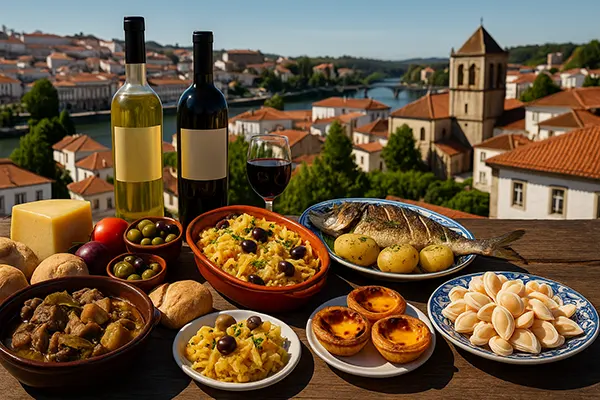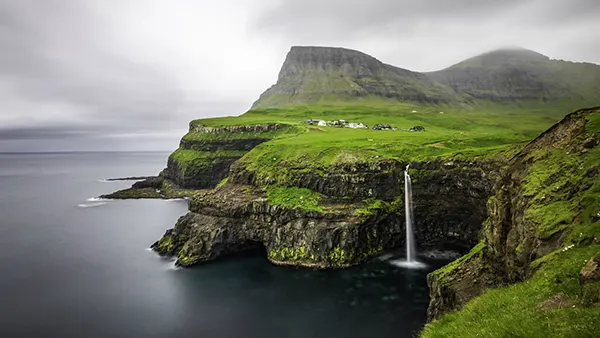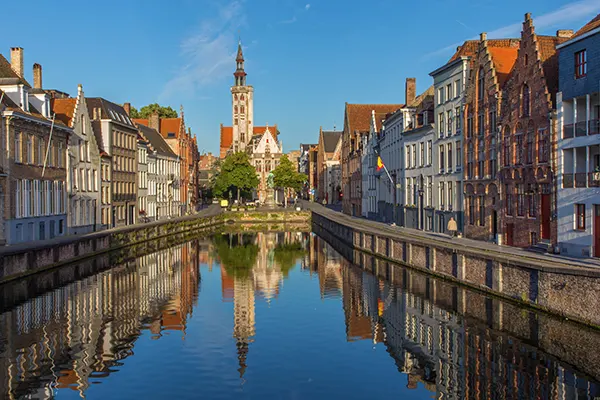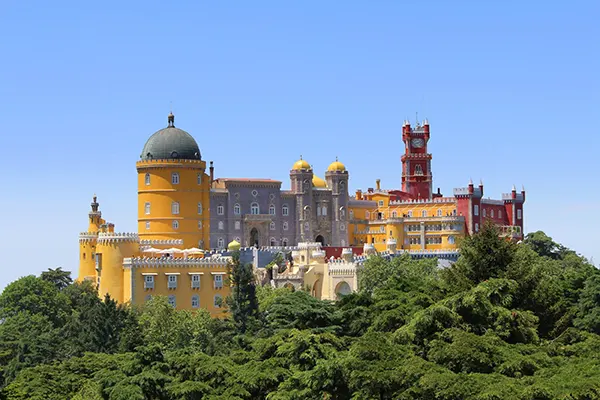
Pena Palace in Sintra: Romantic Symbol of Portugal
Pena Palace, nestled in the Sintra Mountains of Portugal, stands as one of the most iconic expressions of 19th-century romanticism in Europe. Combining neo-Gothic, neo-Manueline, Islamic, and Renaissance elements, this hilltop masterpiece isn’t just a historic building – it’s a vivid symbol of imagination, national pride, and architectural brilliance. Recognised as a UNESCO World Heritage Site, Pena Palace attracts millions of visitors each year for its vivid colours, fairy-tale appearance, and panoramic views stretching to the Atlantic Ocean.
Architectural Vision and Historical Background
The construction of Pena Palace began in 1839 under the guidance of King Ferdinand II, a German prince who became deeply attached to Portuguese culture. Inspired by Bavarian castles and romantic ideals, he transformed the ruins of an old monastery into a bold and eclectic residence. The architect Wilhelm Ludwig von Eschwege played a vital role in bringing Ferdinand’s vision to life, blending diverse styles in a cohesive yet imaginative structure.
The palace’s design is a celebration of national identity, incorporating elements from Portugal’s Age of Discoveries, with navigational symbols, towers, and maritime motifs. This symbolic integration helped to forge a sense of pride and continuity during a time of significant political change across Europe. Each corner of the palace serves not only a decorative purpose but also reflects the aspirations of a nation reimagining itself in the 19th century.
Painted in striking yellow and red hues, the exterior captivates from afar, especially under the moody Atlantic sky. These colours were restored during a major renovation in the late 20th century, following historical descriptions and artistic records, bringing back the palace’s original theatrical character that had faded over time.
Gardens and the Natural Environment
The surrounding Pena Park is just as enchanting as the palace itself. Spread over 200 hectares, it was designed as a romantic landscape garden, echoing the spirit of English gardens but infused with exotic plants from former Portuguese colonies. Visitors encounter winding paths, artificial lakes, fern valleys, and hidden pavilions that evoke a sense of discovery and retreat from the modern world.
King Ferdinand II was personally involved in the botanical planning of the park, ensuring it reflected both aesthetic beauty and scientific curiosity. Species from China, Japan, Australia, and New Zealand were introduced, making the park a living archive of global flora. It served as an expression of Portuguese exploration and global connections long after its maritime dominance had declined.
Today, the park remains an important ecological zone and offers varied walking trails suitable for nature lovers and researchers alike. Its unique microclimate, influenced by the Atlantic Ocean and the mountains, supports lush vegetation that thrives year-round, adding a green crown to the romantic palace above.
Tourist Experience and Visitor Information
Pena Palace is open year-round and is one of Portugal’s most visited monuments. Visitors are advised to book tickets in advance due to high demand, especially during the summer season. The site is accessible by foot, shuttle, or tuk-tuk from Sintra town, and offers several visitor facilities including cafés, souvenir shops, and guided tours available in multiple languages.
The interior of the palace offers a glimpse into royal life in the 19th century. Rooms are preserved with authentic furnishings, textiles, and artworks that reflect the aesthetics and technological advancements of the time. Highlights include the Arab Room, with its Moorish-inspired ceiling, and the Queen’s Terrace offering a majestic view over Sintra’s hills and the Atlantic horizon.
Photography is allowed in designated areas, and efforts are made by the Parques de Sintra organisation to ensure visitor access does not compromise the preservation of the monument. Educational initiatives, digital reconstructions, and sustainable tourism strategies have been implemented to keep the palace relevant for future generations.
Best Times to Visit and Practical Tips
Spring and early autumn are considered the most pleasant times to explore Pena Palace, when crowds are fewer and the natural surroundings are at their peak bloom or golden transformation. Early morning visits ensure better lighting for photography and a quieter experience overall.
Due to the site’s mountainous location, weather can change rapidly. It is advisable to bring layers, wear comfortable shoes for the steep terrain, and check the local forecast before departure. The fog that often surrounds the palace adds a mystical atmosphere, but also affects visibility, particularly in the afternoon.
For those interested in heritage beyond Pena Palace, Sintra boasts several other landmarks such as the Moorish Castle, Quinta da Regaleira, and the National Palace. Purchasing a combined ticket can provide a more affordable and enriching itinerary for a full-day visit.
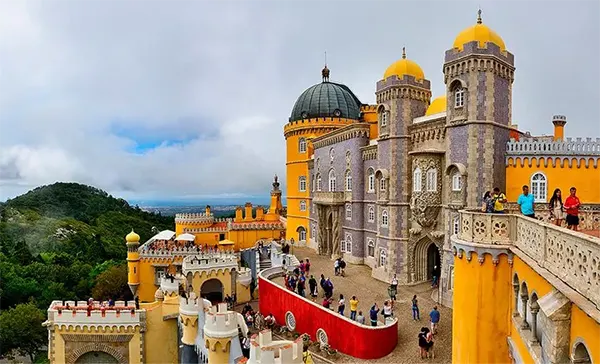
Cultural Legacy and National Importance
Pena Palace has played a pivotal role in shaping Portugal’s cultural identity. As a model of romantic revivalism, it inspired artists, writers, and architects across Europe. Its eclectic style is seen as a precursor to many fantasy-themed constructions of the 20th century, serving as a real-life muse for imagination and national storytelling.
Following the establishment of the Portuguese Republic in 1910, Pena Palace became a national monument and museum, opening its doors to the public. Its preservation was seen not only as a celebration of monarchic legacy but also as a cultural asset that transcended political eras. It reflects the country’s artistic richness and the broader European Romantic Movement’s ideals.
Today, the palace is a source of pride and educational value, hosting exhibitions, concerts, and cultural events that bridge historical context with contemporary appreciation. Its presence in films, literature, and media has solidified its status as one of the most recognisable landmarks in Portugal.
Recognition by UNESCO and Global Tourism
In 1995, Pena Palace was designated as part of the Cultural Landscape of Sintra by UNESCO, recognising its unique integration of architecture, nature, and history. This recognition marked an important milestone in international efforts to preserve and celebrate European romantic landscapes.
As a result, the site receives support for its conservation and is part of global heritage networks that promote sustainable tourism. Portugal has positioned Pena Palace as a flagship destination that represents its blend of history, creativity, and environmental stewardship.
Tourism initiatives have focused on minimising environmental impact, improving accessibility, and diversifying visitor engagement through digital platforms and educational tools. These actions aim to ensure that Pena Palace remains not just a monument of the past, but an evolving symbol of cultural resilience and creativity.


